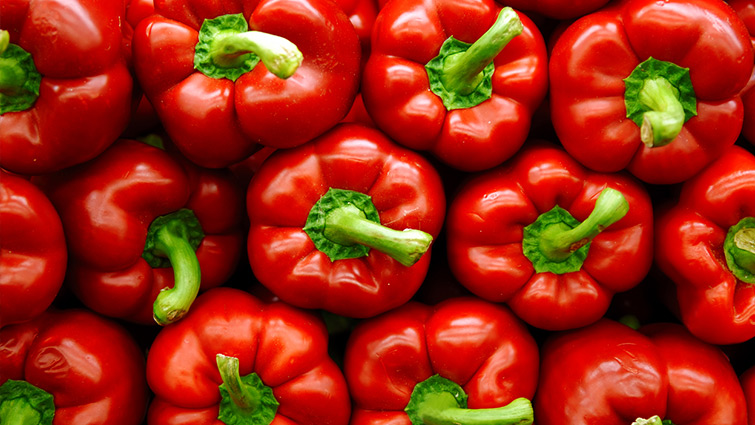Red bell pepper and carrots are our game...but shhhh, it’s the secret of this vegan chili. Supported by the beans of your choice. All your favorite chili spices are here, too.

Recipe: Veggie Chili
Serving size: 1 cup
Servings per recipe: 9
- 1 Tbsp. high heat oil
- 1 Red onion, small and chopped
- 2 Cloves garlic
- 1 Tbsp. chili powder
- 1/2 Tsp. salt
- 1/4 Tsp. paprika
- 1 15oz. Can chopped tomatoes
- 26 oz. Veggie broth
- 1/2 Cup red pepper, pureed (use 1 large red pepper)
- 1/2 Cup carrot, pureed (use 2 medium carrots)
- 4 Tbsp. flaxseed meal
- 1 15 oz. Can beans of your choice
Directions
In a small pot, add chopped bell pepper and carrots. Steam until soft. Add steamed veggies to a blender with just enough water to blend into a puree. Set aside. In a large soup pot, sauté onion in high heat oil until soft. Add garlic, chili powder, salt and paprika and toast together for about one minute. Stir in the tomatoes, broth, purees,and flax seed. Stir well and bring to a boil; add beans and reduce to a simmer for 15 to 20 minutes until the flavors marinate together. Serve immediately.
Nutrition Facts
Serving size:
| Calories | 90 |
| Total Fat | 2.5g |
| Saturated Fat | 0g |
| Trans Fat | 0g |
| Cholesterol | 0mg |
| Sodium | 670mg |
| Total Carbohydrate | 15g |
| Dietary Fiber | 5g |
| Total Sugars | 5g |
| Includes 0g Added Sugars | |
| Protein | 4g |
| Vitamin D | 0mcg |
| Calcium | 36mg |
| Iron | 1mg |
| Potassium | 318mg |

Star Ingredient:
Bell Pepper Contain:
Vitamin A*
When most people think of vitamin A, they think of their eyes. When vitamin A is lacking, the eye has difficulty adapting to changing light levels. Vitamin A is a versatile vitamin that also is involved with protein synthesis, reproduction and growth. The role that vitamin A plays in vision is undeniably important, but only one-thousandth of the body’s vitamin A is in the retina. Much more is in the skin and the linings of organs, where it participates in protein synthesis and cell differentiation.
Vitamin K*
Vitamin K has long been known for its role in blood clotting. It also participates in the synthesis of several bone proteins. Bacteria in the intestinal track synthesize vitamin K that the body can absorb but people cannot depend on this source alone for vitamin K. Many foods contain ample amounts of vitamin K, notably green leafy vegetables and members of the cabbage family. If you are taking blood-thinning medication, be sure to talk with your Registered Dietitian or Physician about how much vitamin K is safe for you to consume.
Potassium*
Potassium is the principle positively charged ion inside the body cells. It plays a major role in maintaining fluid and electrolyte balance and cell integrity. It is also critical in keeping the heartbeat steady. It assists in carbohydrate and protein metabolism. Potassium is abundant inside all living cells, both plant and animal, and because cells remain intact unless foods are processed, the richest sources of potassium are fresh foods of all kinds, especially fruits and vegetables.
*These statements have not been evaluated by the Food and Drug Administration. This is not intended to diagnose, treat, cure, or prevent any disease.

